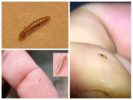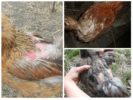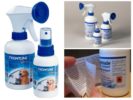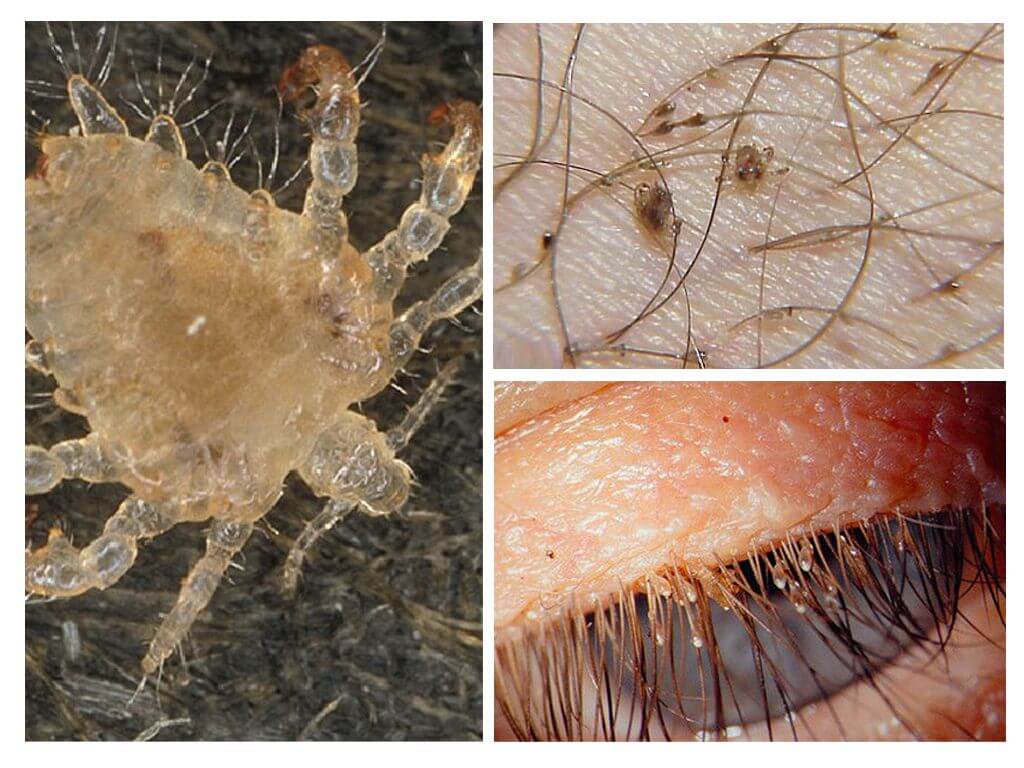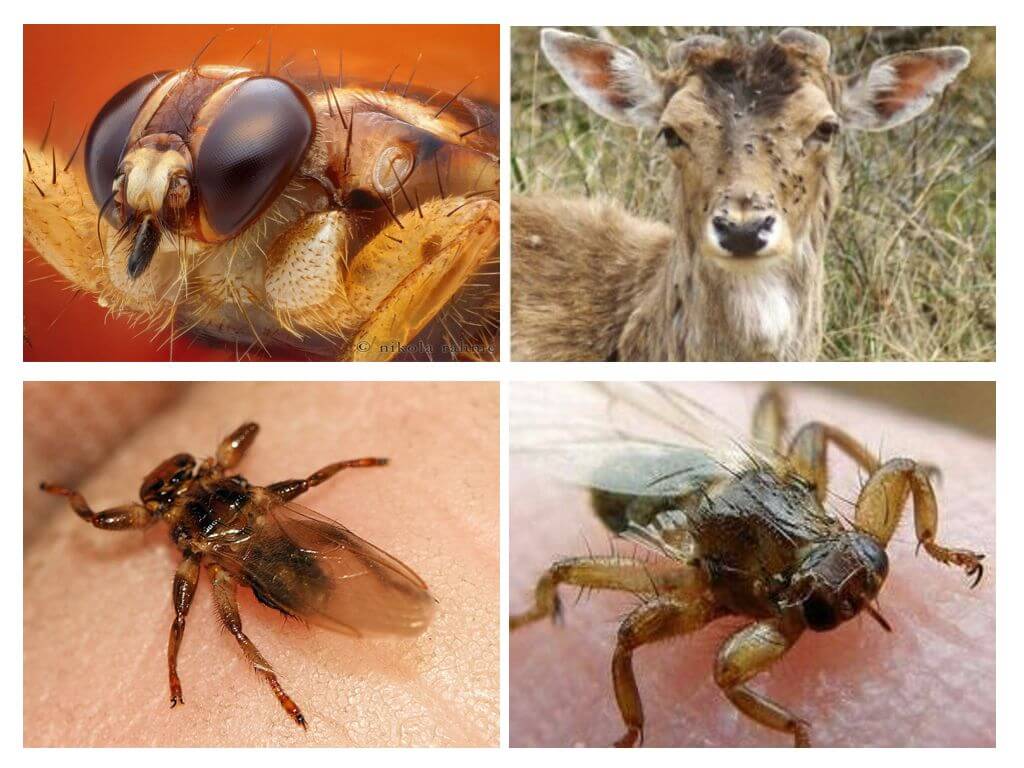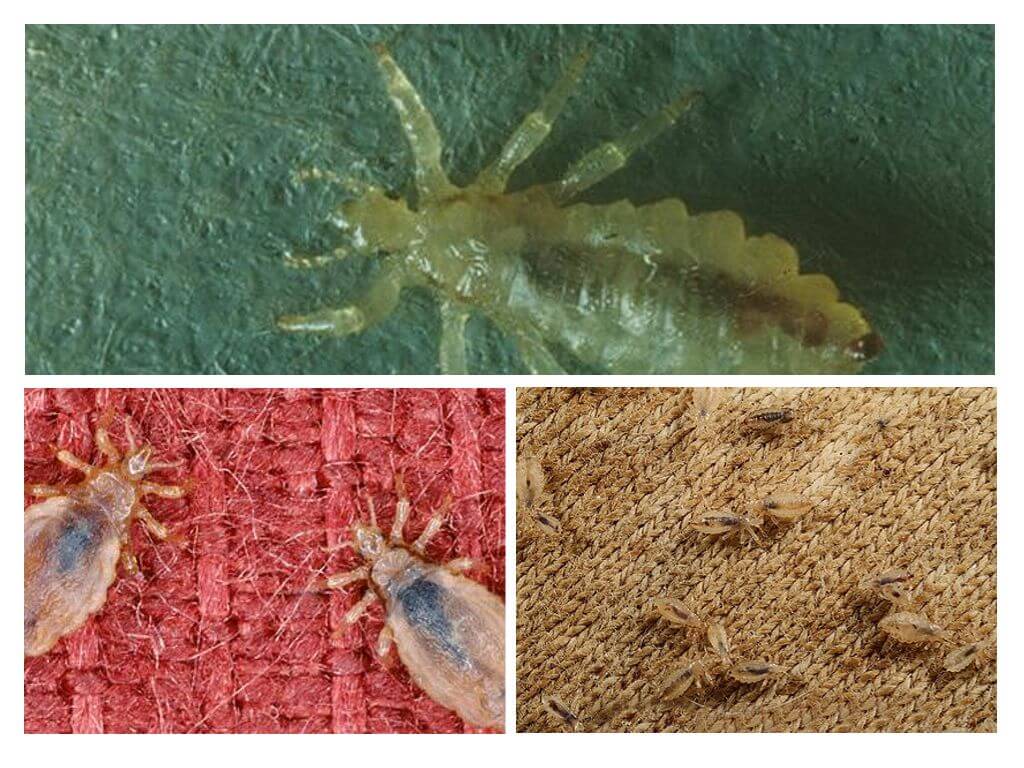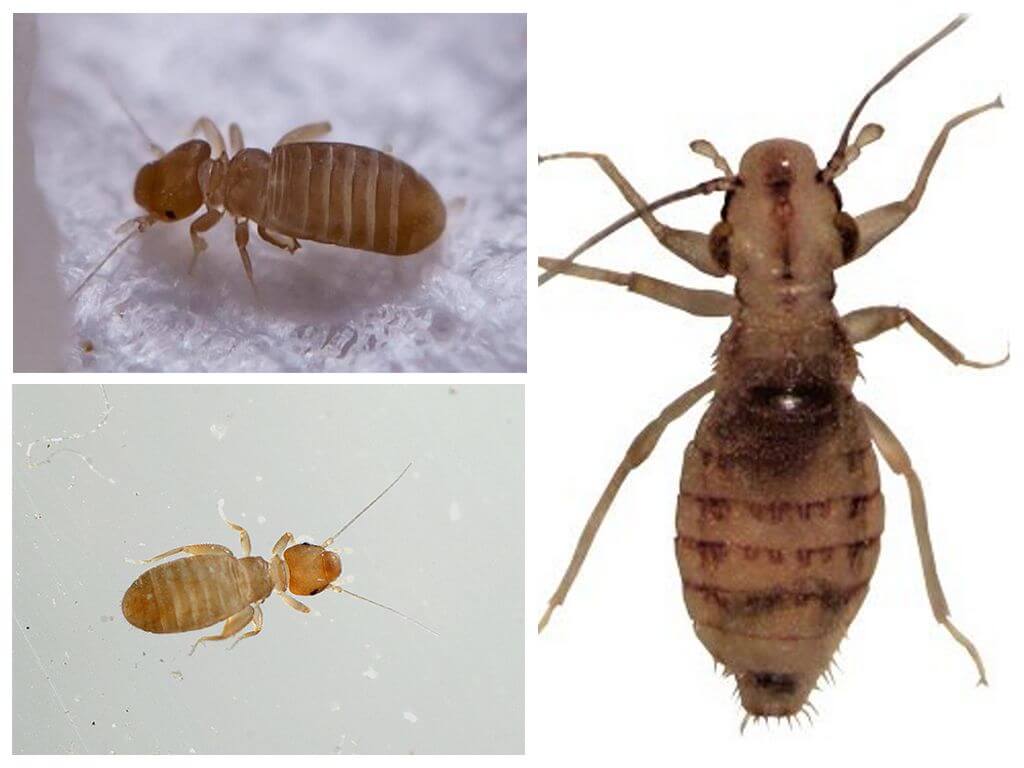- Chicken lice
- Lice in chickens
- Folk remedies
- Spray Front Line
Chicken lice carry infectious diseases. Most species live only on layers and boilers. But this does not mean that a person does not suffer from parasites. Arthropods cause chickens to die, and contaminated meat is not good for food and sale.
Where do the parasites come from?
A louse parasitizing on a chicken is called a mallophage. The disease is called malophagosis. A live parasite is often found in a small and processed chicken house. Other species of birds carry lice, attracted by a feeder and clean water.
On a note!
Not only chickens are affected by malophagosis. Parasites can live on any domestic and wild bird.
The main reasons for the appearance of parasitic individuals:
- high humidity in the chicken coop;
- unsanitary conditions;
- poor chicken care;
- cramped cells;
- insufficient processing facilities.
Insects from infected birds switch to healthy ones and begin to multiply actively. Fighting lice in chickens in an advanced stage is very difficult.
What do mallophages look like
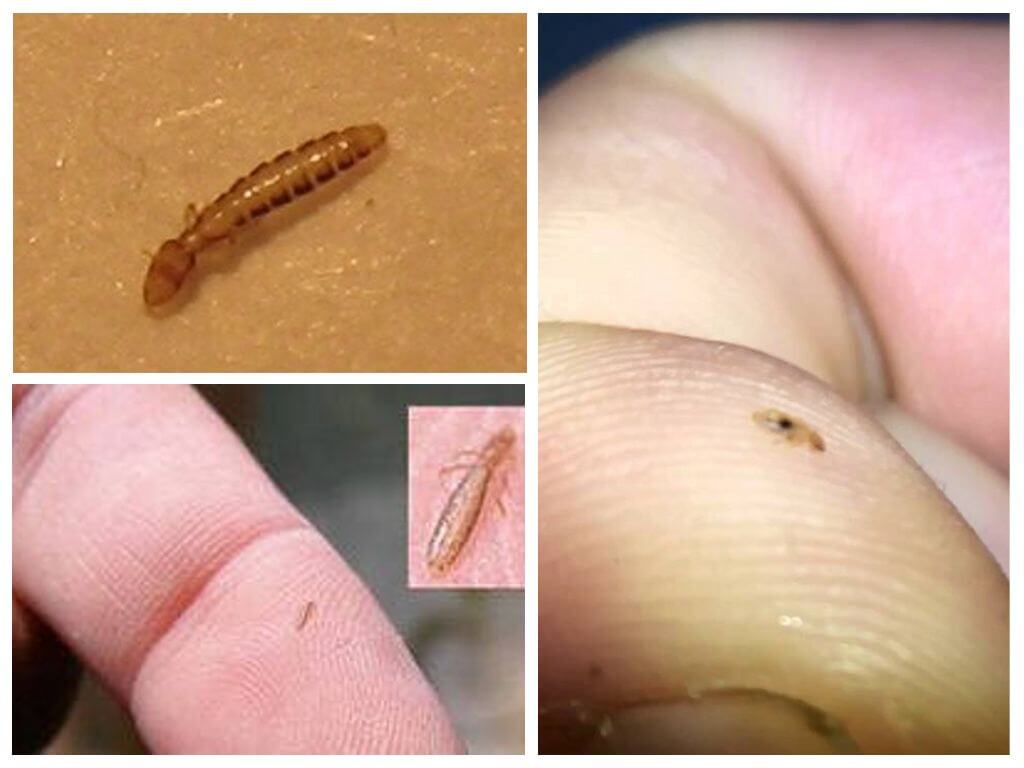
It is not easy to see the insect with the naked eye, but you can see the photo of chicken lice. The parasite is 1.5 to 2.5 mm long in brown. His head is slightly wider than the body. It lives on the skin. Lays eggs at the base of the feather.
A louse cannot move through the air, but jumps high. It has a solid chitinous shell. It is able to settle on any species of birds, but it does not survive on mammals. Some poultry farmers mistakenly believe that chicken lice live on humans, mistaking fleas for mallophages.
Interesting!
The parasite is able to live without food for 2 to 5 days.
The louse is held on the body of the chicken with the help of three pairs of paws and strong jaws. The main food is blood. In addition, she uses fluff, feather, skin flakes, causing severe itching.
The most common places where lice can live:
- under the wings;
- around the anus;
- on the neck.
To detect malophagosis at the initial stage, thermotropism is used - heating the chicken for 10 minutes. After this procedure, bird lice crawl to the surface of the feather. To diagnose a sick bird, the veterinarian will take a scraping.
Symptoms
At the initial stage, the disease in hens almost does not manifest itself. But pests multiply rapidly and soon poultry farmers can notice them on layers and boilers.
The main symptoms that indicate chicken lice:
- The bird behaves uneasily, often goes over feathers, is nervous.
- The egg-laying ability of laying hens is reduced on average by 11%.
- At the hens feathers and down fall out, the body is exposed.
- The body weight decreases.
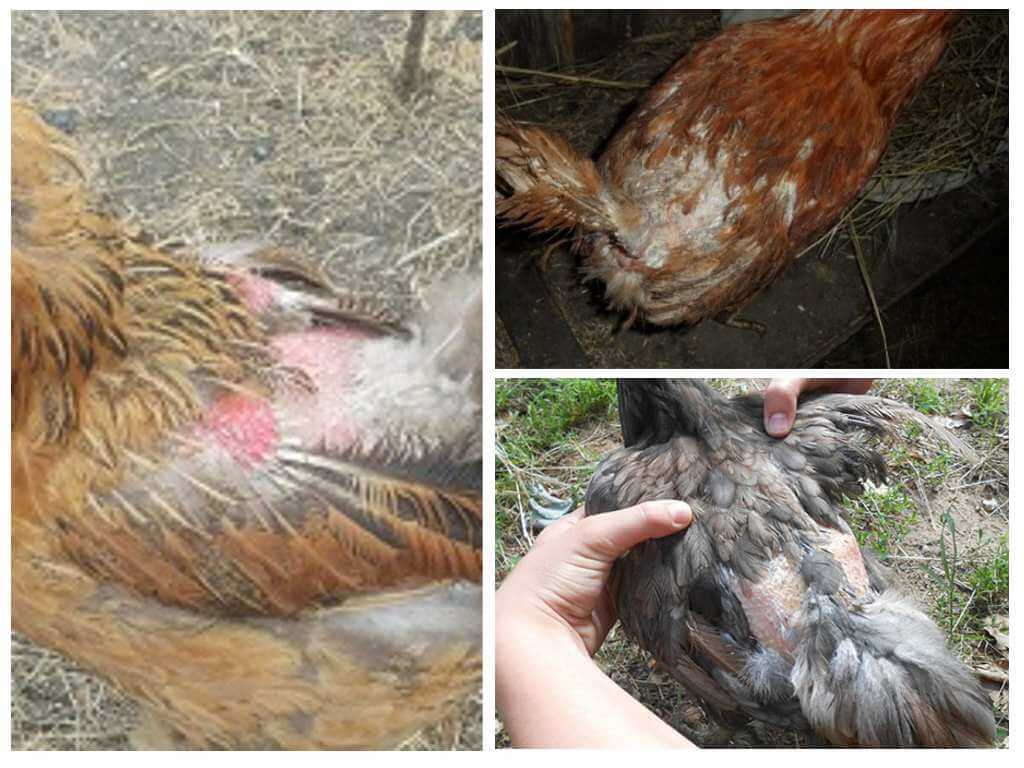
The skin damaged by the pest constantly itches. The chicken seeks to relieve itching and pecks itself by plucking feathers and doing harm to itself. Chicks infected with mallophage do not gain weight and die from malnutrition. Adults suffer from anemia, lose their appetite, lose weight. Some pests affect the eyes and cause conjunctivitis.
Interesting!
A louse on a human body does not survive. She cannot bite through skin that is thicker than chicken.
Roosters are more susceptible to disease, because they do not like to take sand baths and less often clean feathers. If the crest acquires a bluish tint, then it is worth checking the bird for pests.
Methods of controlling malophagosis
The fight against parasites is the processing of birds and premises.Inexperienced poultry farmers often do not know what to do if the hens have lice. Therefore, they lose time using ineffective methods.
You can rid a bird of pests by folk methods and poisons. Regardless of the control method chosen, to completely eliminate the parasite, the chicken is treated twice. The second treatment is carried out a week after the first.
Folk recipes
If the disease is not in an acute stage, then you can get by with "home recipes." They are good because they are available and do not cause an allergic reaction.
On a note!
Drugs are not applied to the eyes and beak of a bird.
The most effective drugs used at home are as follows:

- Table vinegar. The substance is diluted with water in a ratio of 1: 3 and spray the bird. The easiest way to handle chicken is from a spray bottle.
- Kerosene. Sick chickens are placed in a separate cage and treated. The substance damages the chitinous membrane of lice, causing their death.
- A mixture of alcohol, gasoline, kerosene. The components are mixed in equal proportions, and then applied to the skin of the chicken. The tool allows you to partially destroy the eggs of the mallophage.
- Herbal decoction. Take 300 g of tansy, ledum, chamomile. Herbs pour 6 liters of boiling water and cook over high heat for 15 minutes. This folk recipe is used when the infection is negligible.
Each home method can be used for prevention or for suspected malophagosis, but there is no way to contact a veterinarian.
Chemistry
The drug for the treatment of lice can be bought at a veterinary pharmacy. Treatment with "chemistry" begins when it is no longer possible to remove lice from chickens by folk methods, or the problem with "home recipes" has not been resolved.
The most popular substances include:
- Insect acaricidal powder. The drug is rubbed into the skin of the chicken. For processing, 1 to 5 g is enough.
- Butox. One ampoule is diluted in 4 liters of water. If you need to process a large number of birds, then take 2.5 ml of the substance and 10 liters of water.
- Front Line and Beafar. Insecticide is available in the form of a spray. It is sprayed onto the chicken until its feathers get wet.
- Promectin. An effective drug for the treatment of young animals. It is added to drinking water following the instructions.
It is necessary to process not only the bird. A louse may be in the room itself. In this case, even bird litter is dangerous. To process the chicken coop use:
- Sevin;
- Peritrum;
- Butox.
All substances are used according to the instructions. Before processing it is necessary to put on a protective suit and a mask.
On a note!
To get rid of chicken lice in the apartment, it is enough to carry out wet cleaning, and the poultryman himself to wash his suit for work and take a shower immediately upon returning to the house.
Prevention
It is easier to prevent the appearance of unwanted insects than to treat a chicken coop from lice and fleas. If certain rules are followed, then the risk of pests is reduced:
- You should do regular cleaning in the chicken coop, change the litter, and treat the feeders with boiling water.
- In a small house you can hang bunches of wormwood. The smell of grass will scare away the louse.
- Seal the gaps and holes in the chicken coop so that rats do not enter it. Destroy the nests of wild birds.
- Make a chicken bath of sand and ash.
Preventive measures do not always help. Therefore, chicken feathers should be inspected once every two weeks. It is better to do this with a magnifying glass and on the street, since the chicken louse is small in size and it is not easy to detect.
